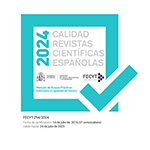Eindeutige Symbolik. Zu einigen Bildern und Motiven in Andorra, Biedermann und die Brandstifter und Homo faber
Abstract
Unlike Schiller Goethe determined in Maximen und Reflexionen that the symbol as image is not to be applied to the idea which in itself is not to be associated with expression. As a consequence symbolic speech is given allegoric ambiguity by comparison. Max Frisch tends to be more on the side of Schiller. Goethe`s symbolic language more especially in Andorra, Biedermann und die Brandstifter and Homo faber is to be explicitly associated with expression. In this case the symbols used in the works clearly express the function of the image and the function of transposition to a second level of significance for the situation given in the tales: to that of the mythology. To be found as clear symbols in Andorra are the queen bees, the pole and shoe. The fire brigade choir in Biedermann und die Brandstifter refers to irreversible fate. The mythos which catches up with the homo technicus Walter Faber is that of the Oedipus.Downloads
##submission.format##
Licenza
La Revista de Filología Alemana, para fomentar el intercambio global del conocimiento, facilita el acceso sin restricciones a sus contenidos desde el momento de su publicación en la presente edición electrónica, y por eso es una revista de acceso abierto. Los originales publicados en esta revista son propiedad de la Universidad Complutense de Madrid y es obligatorio citar su procedencia en cualquier reproducción total o parcial. Todos los contenidos se distribuyen bajo una licencia de uso y distribución Creative Commons Reconocimiento 4.0 (CC BY 4.0). Esta circunstancia ha de hacerse constar expresamente de esta forma cuando sea necesario. Puede consultar la versión informativa y el texto legal de la licencia.










